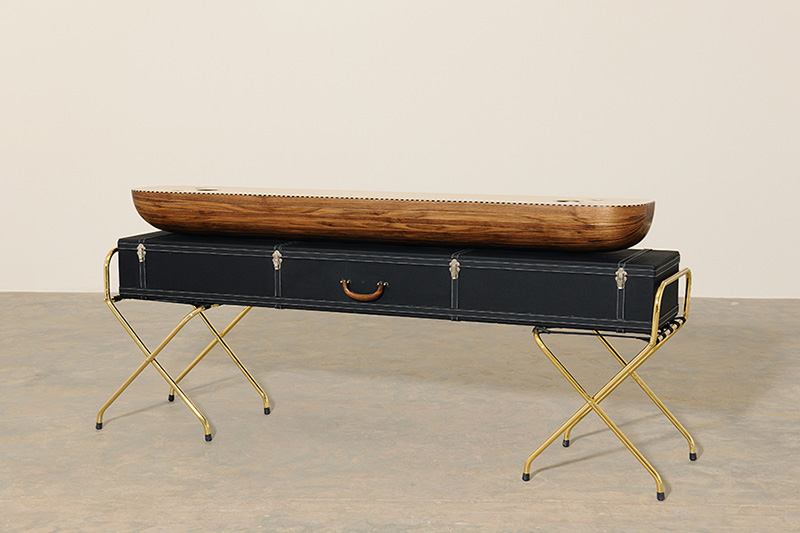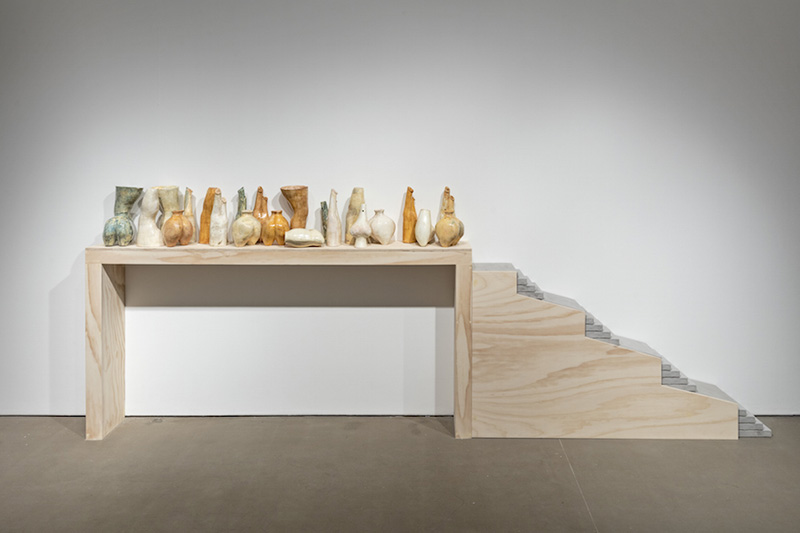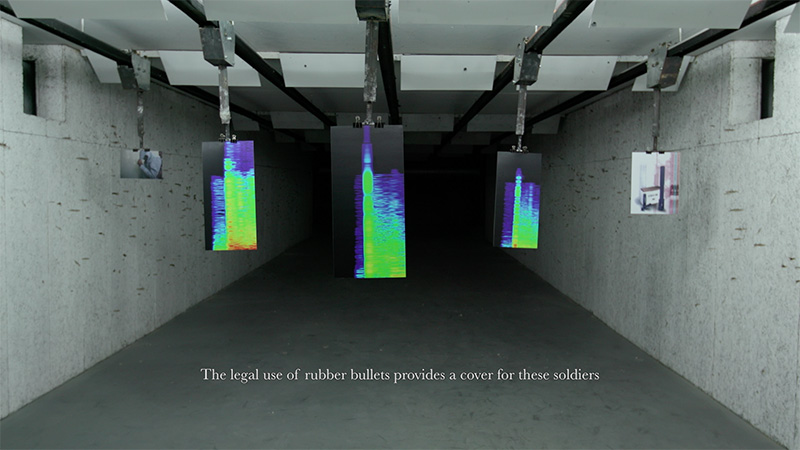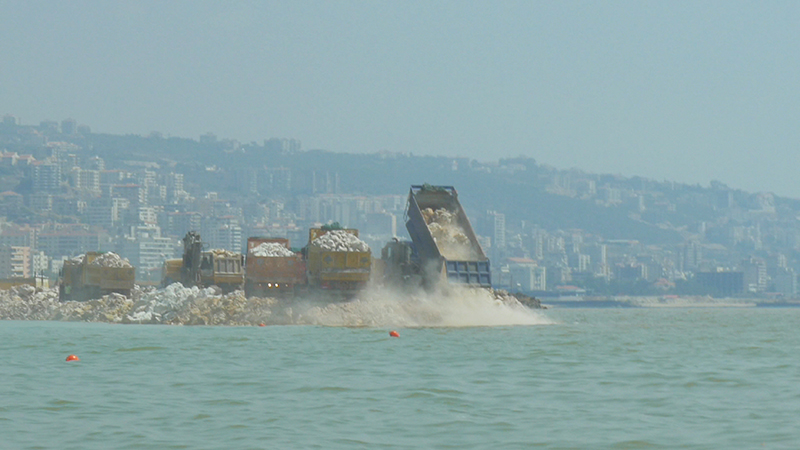ART-PRESENTATION: From Ear to Ear to Eye
 “From Ear to Ear to Eye” is an exhibition considering the politics of sound, music and listening in myriad forms. It explores the acoustic lives of cities across the Eastern Mediterranean and the Arab world, and the many ways in which translation, notation and recording are used to map memories and migration, territories and conflict.
“From Ear to Ear to Eye” is an exhibition considering the politics of sound, music and listening in myriad forms. It explores the acoustic lives of cities across the Eastern Mediterranean and the Arab world, and the many ways in which translation, notation and recording are used to map memories and migration, territories and conflict.
By Dimitris Lempesis
Photo: Nottingham Contemporary Archive
Through a diverse range of work and practices, the exhibition “From Ear to Ear to Eye” represents sound and notation as means of tracing histories, identities and experiences. The exhibition is concerned with that which might be voiced or heard, but resists being visualised. The exhibition is one the largest surveys of contemporary artists in the Arab world to be have been presented in the UK., and brings together installation, sculpture, photography, film, music and archives by 18 artists of different generations. With its title borrowed from a text by Anna Boghiguian*, the exhibition comprises graphic scores, field recordings, musical instruments and sonic archives. The exhibition presents a wide range of perspectives on complex questions of harmony and violence, traversing very different cities, practices and experiences. It moves from folk music at the dawn of modern Turkey to radio broadcasts in Palestine, from a bird’s-eye view of the Egyptian Revolution’s aftermath to the shifting urban fabric of present-day Beirut. Featuring work spanning the last 50 years, there is an emphasis on recent work, as well as new commissions. The exhibition considers sounds travelling across borders, or being used to define them. Mounira al Solh tells the stories of Syrian migrants living in refugee camps around Beirut through woven portraits. Other works engage with the lived and imagined experience of places, such as Shirin Yousefi’s “The Tales of the Cortex”, which evokes the fleeting sounds and fragrances of the Kurdish landscape, or Ziad Antar’s hazy photographs taken from a boat travelling up the coast of Lebanon. The ways in which histories can be told through music are represented through Haig Aivazian’s sculptural installation, which grew out of his research into Turkish oud music, and its ties with religion, cultural identity and national aspiration. A film by Jumana Manna represents the rich musical traditions from across Jerusalem and its relationship to the West. Elsewhere the exhibition is concerned with how sounds can provide evidence or testimony, such as Lawrence Abu Hamdan’s forensic analysis of the sound of gunshots. Made in Kurdish Iraq in 2011, Hiwa K’s video “This Lemon Tastes of Apple” documents a musical intervention, a score by Ennio Morricone, in a civil protest. The relationship between sound, image and notation is explored in the work of Joe Namy, who limns the limitations of translation and the disconnect between subtitles. The hand-painted leporellos** of Etel Adnan combine the verbal and visual in accordion-folded booklets. The process of recording history is also atheme of the exhibition. Raed Yassin’s “Ruins in Space” rewrites musical history by crafting a fictional friendship between two musicians, to imagine a utopian cultural crossover involving the Egyptian chanteuse Umm Kulthum. Ania Dabrowska navigates a vast photographic archive, drifting through and collating images from different decades. The exhibition is an argument for the importance of listening, as much as looking. Among the participating artists are: Lawrence Abu Hamdan, Etel Adnan, Haig Aivazian, Mounira Al Sohl, Basma Alsharif, Ziad Antar, Marwa Arsanios, Ania Dabrowska, Malak Helmy, Joana Hadjithomas & Khalil Joreige, Hiwa K, Jumana Manna, Joe Namy, Setareh Shahbazi, Raed Yassin, Shirin Yousefi.
*Anna Boghiguian was born in 1946, an Armenian in Cairo, yet never adopted the city as her only home, continuing to have a conflicting relationship with the city today. Living a nomadic life, the artist has constantly moved from city to city across the globe. Immersing herself in the sights and sounds of the city, as well as the literature, poetry and politics of its people, the artist nonetheless remained distant, an outsider in a busy metropolis.
**The term leporello refers to printed material folded into an accordion-pleat style.
Info: Nottingham Contemporary, Weekday Cross, Nottingham, Duration: 16/12/17-4/3/18, Days & Hours: Tue-Sat 10:00-18:00, Sun 11:00-17:00, www.nottinghamcontemporary.org






